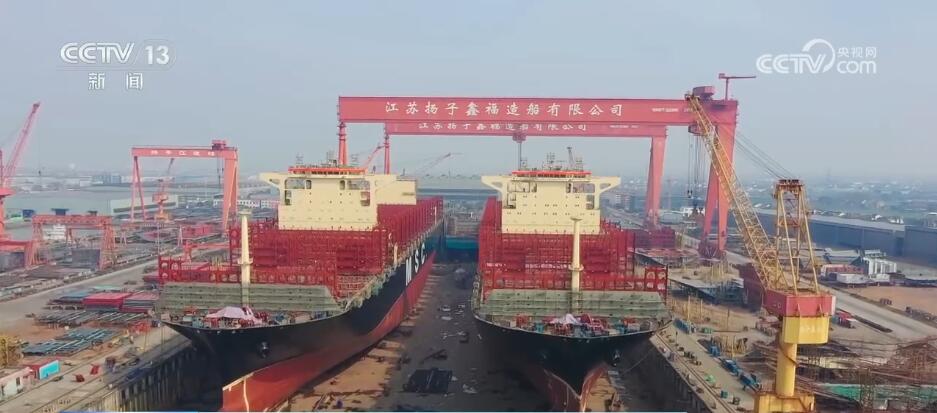Prospect of Toyota’s new cars in 2019, such as Asian Dragon/New Lei Ling.
[car home News] In 2018, Toyota’s cumulative sales in China market reached 1.47 million vehicles (including Lexus), up 14.3% year-on-year. The two joint ventures FAW Toyota and GAC Toyota contributed 720,000 vehicles and 580,000 vehicles respectively. In fact, 2018 is not a big year for Toyota products, and it is not easy to achieve steady growth. In 2019, Toyota will step up its product offensive in China market, and launch eight brand-new models, including (|), brand-new Corolla/Lei Ling and brand-new RAV4. Not only will the sports car 86 return to the market, but Supra, which has just made its world debut, is also expected to be introduced. Then, please follow us to see what heavy products Toyota will launch in 2019.

From the perspective of specific models, Toyota’s focus in 2019 will be compact, including cars and SUVs, with a total of five models. New energy is still its focus. The fuel consumption of Corolla dual-engine E+ and Ralink dual-engine E+ PHEV models is particularly eye-catching, and the fuel consumption is 4.3L/100km under the feeding condition (that is, when the battery power is zero). In addition, Toyota also shows a more sporty side. Two sports cars, 86 and Supra, will be introduced to China. Whether the civilian sports car and Niu Mowang can continue their names is worth looking forward to.
Quickly understand the key points of this article:
1. Toyota will launch at least 9 models for the China market in 2019;
2. It includes 8 brand-new models;
3. New energy is still the key direction;
4. Try a new sports car again;
5. Toyota is stepping up its product offensive in China market.

● Asian dragon
Time to market: March 2019
New car features: the upgrade of appearance "arrogance" and the hybrid version are advantages.

The domestic Asian Dragon was launched during the 2018 Guangzhou Auto Show, and the degree of "arrogance" is further compared with the previous generation, which is even worse than Camry. Recently, Asia Dragon announced the pre-sale price of four models, of which the pre-sale price of 2.5L is 244,800 yuan; The pre-sale price of the mixed version is 239,800 yuan; The pre-sale price of the mixed version is 257,800 yuan; The pre-sale price of the hybrid version is 289,800 yuan.


"Domestic Asian Dragon Double Engine"

"Overseas version"
The domestic version of the Asian Dragon retains the overall design of the overseas version. The exaggerated front grille almost occupies the front of the car, with angular LED light sets and front bumper lines, showing a strong momentum. However, the new car is not equipped with the LED headlight group with Pisces bone-shaped daytime running lights of overseas high-profile models, but is replaced with a unique three-circle full LED headlight. From the visual perception, the sharpness of the latter’s "eyes" is obviously lower than that of the overseas version of "fishbone lights".


Viewed from the side, the Asian Dragon looks very elegant, and the low body style makes the new car look more stretched. On the tail side, the car uses a through taillight group with a full-fledged rear bumper, which greatly improves the sports temperament of the new car. In terms of body size, the length, width and height of the new car are 4975/1850/1450mm and the wheelbase is 2870mm respectively.

In terms of interior, the new car adopts a symmetrical design style, which is not the same as Camry, and it shows a calm atmosphere. The most attractive thing in the whole central control area is this 9-inch central control LCD screen, which integrates conventional multimedia functions, is easy to operate and supports Apple CarPlay function.

In terms of configuration, the new car will be equipped with leather seats, panoramic sunroof and sewing design of door trim panels. Another highlight of the new generation of Asian Dragon is that AVS adaptive variable suspension system will be standard, which can effectively improve ride comfort and driving stability.

Domestic Asian Dragon provides 2.5L inline four-cylinder naturally aspirated engine and 2.5L hybrid engine, both of which are A25A 2.5L naturally aspirated engines of Toyota Dynamic Force series, with maximum thermal efficiency of 40% and 41% respectively. Among them, the maximum power of the 2.5L model is 209 horsepower, and the transmission system is matched with the 8-speed automatic manual transmission; However, the maximum power of the 2.5L engine of the twin-engine model is 178 HP, the maximum power of the motor is 120 HP, and the comprehensive maximum power of the system is 218 HP. In terms of fuel consumption, it is officially announced that the comprehensive fuel consumption of the 2.5L+8AT model is 6.2L/100km, while the dual-engine model is only 4.3L/100km.
Editor’s comment:

In the medium-sized automobile market, FAW Toyota has been silent for a year after Reiz stopped production in September 2017. Fortunately, in November 2018, FAW Toyota officially released the domestic Avalon (Asian Dragon). The exaggerated design language of the new car instantly makes this medium-sized car, which was originally moderate and steady, run wild, and also brings fresh blood to the domestic joint venture brand medium-sized car market. At the same time, the addition of Asian Dragon has also broken the status quo that Toyota’s medium-sized car is only Camry "single-handedly" and seized more shares for it.
However, from the perspective of Camry and ES of Toyota’s domestic layout, how to differentiate and price the Asian dragons on the same platform has become its first consideration. Judging from the pre-sale price recently released, the price of the hybrid version of FAW Toyota Asia Dragon is basically the same as that of the fuel version, which obviously comes with sincerity, and the main sales model is between Camry and ES, and Toyota really plays a "good card". As for whether it can impress consumers after listing, it remains to be tested by the market.

● New Corolla/Lei Ling (including double engines)
Time to market: August-September, 2019 (Corolla) and May 20, 2019 (Lei Ling).
New car features: drastic changes


"The picture shows the new Corolla Twin Engine/Ralink Twin Engine"
The brand-new Corolla sedan and Lei Ling sedan made by Toyota’s two China partners ushered in the debut at the 2018 Guangzhou Auto Show eight months after the launch of the American version of Corolla (the car released at the auto show is a hybrid version). Of course, the relationship between the two is still a sister car, and the visible difference at present is only in the appearance. Compared with the sedan image of current models, the brand-new Corolla/Lei Ling based on TNGA architecture is young and avant-garde in appearance.


The front face shapes of the new Corolla and Ralink are obviously different. The former does not use the "fangs" headlights of overseas models, while the front face of Ralink is closer to the overseas version. The large-area grille on the front of the car is eye-catching. The difference is that Corolla is a banner style, while Ralink is a mesh design.


In the rear part, there are still obvious differences between the two cars. Corolla takes a simple route and Ralink is a sporty style. The most direct advantage of this design is that the Corolla and Lei Ling can be easily distinguished from the front face and the rear of the car.

In addition, Toyota China announced at the launch that the new Corolla/Lei Ling will be equipped with the China version of the exclusive 12.1-inch central control panel and PM2.5 filtering system. Compared with the overseas version of the 8-inch screen, this can be said to be considerate of the needs of consumers in China. In terms of configuration, the new car will also be provided with the latest generation of Zhixing interconnection system and Zhixing safety system, of which the latest Zhixing interconnection system will be 100% installed in all future replacement cars of Toyota. As for the power part, the official has not announced the specific parameters of the new car power, only revealing that the new car will be equipped with the latest version of the 1.8L hybrid system.
Editor’s comment:

As the sales pillars of Toyota in China market, Corolla and Lei Ling shoulder the heavy responsibility of stabilizing the compact car market, laying a solid foundation for Toyota’s expansion in China market. According to the latest data, the cumulative retail sales of Corolla in 2018 was 294,300, and the sales of twin-engine models were 82,400, up 3% and 41% respectively. The annual sales volume of Lei Ling (including double engines) reached 202,700 vehicles, a year-on-year increase of 21%.
Obviously, the Gemini strategy has not caused each other to seize the market, but has successfully met the needs of different consumers, and each has its own advantages to meet the needs of more consumers and win market share. The existing data show that the interior changes are also huge and are loved by consumers. As for the market performance after listing, these two cars are expected to continue their cash sales or will usher in new growth.

● Corolla/Ralink engine E+
Time to market: March 2019 (Corolla Shuangqing E+) and March 2019 (Ralink Shuangqing E+)
New car features: fuel consumption under feed condition is 4.3L/100km.

At the 2018 Beijing Auto Show, Toyota fulfilled its promise made two years ago and released the Corolla/Ralink E+ at the same time. These two models are exclusive to the China market, and they share a plug-in hybrid system consisting of a 1.8L naturally aspirated engine, two motors and a battery pack. According to official data, the fuel consumption of the whole system is 1.3L/100km under comprehensive working conditions and 4.3L/100km under feed working conditions (that is, when the battery power is zero), which can be described as strong competitiveness.


"The picture shows Corolla double engine E+ and Ralink double engine E+"
Let’s look at the appearance first. Both cars continue the design of the current fuel version, only the details are different. In the details, the new car has added blue elements to the front grille and headlights to highlight its new energy identity. In addition, the headlight light source comes standard with LED, and the LED daytime running light of Corolla dual-engine E+ is only available for two models with high allocation.


In the rear part, each of the two cars has a blue decorative strip that runs through both sides. The Corolla dual-engine E+ is more obvious, and the rest is not much different from the fuel version. The fuel filler is on the left side of the car body, and the charging port is on the right side of the car body. In the charging part, take the Corolla dual-engine E+ as an example. The car supports public AC charging piles and portable chargers, which take about 3 hours and 5 hours to be fully charged respectively.

The picture shows the Corolla twin-engine E+, which is only different from the Ralink twin-engine E+ in configuration.
In terms of interiors, both cars follow the fuel version of the car design, and there are no popular elements at present, which may be its charm. In terms of configuration, the new car uses an 8-inch touch screen and supports the interconnection function of Baidu CarLife mobile phone. But there is no reversing radar function in the whole system.

In terms of power, both cars are equipped with a plug-in hybrid system consisting of a 1.8L naturally aspirated engine, dual motors and battery packs, in which the maximum power of the engine is 99 HP and the maximum torque is 142 Nm; The maximum power of the motor is 72 HP and the maximum torque is 207 Nm. In terms of transmission system, it still matches the E-CVT continuously variable gearbox; The cruising range of the car in pure electric mode is 55km.
Editor’s comment:

Toyota’s plug-in hybrid version based on Corolla and Lei Ling cars is easy to understand, which is intended to inherit the golden signboard of Corolla, and the hybrid technology has been very mature for many years. In addition, the double-point system requires Toyota to have corresponding plug-in or pure electric vehicles in China, so it is a route that can be realized quickly based on cash.
Judging from the latest sales data, the cumulative sales volume of Corolla Shuangqing from January to December was 82,400 units, a year-on-year increase of 41%; The cumulative sales volume of Leiling Shuangqing this year is 44,600 units. It is not difficult to see that consumers are gradually recognizing Toyota hybrid technology. Reliable and mature hybrid technology, low fuel consumption and high user base and reputation of Corolla/Lei Ling will lay a good starting point for these two plug-in hybrid models.







































